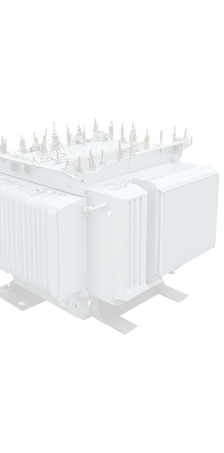When it comes to ensuring the long-term reliability and performance of your electrical infrastructure, Safety Transformer checks before and after repairs are non-negotiable. Whether you’re dealing with used transformers, power transformers, or surplus transformers, following essential safety protocols can protect your equipment, your team, and your investment.
In this blog, we’ll break down the most important safety checks every technician and facility manager must carry out both before and after transformer repair work. These steps not only boost performance but also significantly reduce the chances of costly failures or electrical hazards.
Why Safety Checks Matter for Transformers
Transformers are complex, high-voltage devices that require precision, proper care, and technical knowledge. After all, even a small mistake can lead to overheating, power loss, or dangerous arc flashes. When handling any Safety Transformer, understanding what to inspect, test, and monitor is crucial.
Whether you’re planning to sell used transformers or get them repaired for extended use, comprehensive checks keep operations secure and compliant with electrical safety standards.
Pre-Repair Safety Checks
Before starting any repair, several pre-repair checks must be performed. These include physical, mechanical, and electrical assessments.
1. Visual Inspection
The first step is always a thorough visual inspection. Look for signs of:
- Oil leaks in oil-filled units
- Burn marks or discoloration on bushings
- Corrosion on terminals and enclosures
- Physical damage or dents in the casing
Visual inspections can help catch early signs of wear or accidents that could affect transformer functionality.
2. Disconnect and De-Energize
Ensure that the transformer is fully disconnected from the power source. Lock-out/tag-out (LOTO) procedures must be followed strictly. This is especially important for older used transformers for sale near me, where outdated systems can be more vulnerable to sudden failure.
3. Insulation Resistance Testing
Using a megohmmeter, measure the insulation resistance between the windings and ground. This test helps identify moisture, deterioration, or internal short circuits.
4. Oil Sampling (for Oil-Filled Units)
If the transformer uses insulating oil, it should be tested for:
- Moisture content
- Dissolved gas analysis (DGA)
- Dielectric breakdown voltage
This is vital before any repair, especially if you aim to buy used transformers and extend their operational life.
Repairs: The Middle Step
Once pre-checks are complete and the transformer is safely de-energized, the repair work can begin. Repairs may include:
- Coil rewinding or transformer rewinding
- Replacing damaged bushings or gaskets
- Core clamping and insulation upgrades
- Tap changer replacement or cleaning
Only qualified professionals from a trusted transformer company should carry out these tasks, especially if you’re repairing units for resale or reuse.
Post-Repair Safety Checks
After repairs are done, post-repair testing ensures that the transformer is safe to re-energize and function as expected. Here’s what you must perform:
1. Dielectric Testing
Dielectric strength of insulation must be retested to ensure no breakdown occurred during repair. This step ensures the longevity and safety of any Safety Transformer, especially when it’s reintroduced into a high-load system.
2. Winding Resistance Testing
Use a low-resistance ohmmeter to check the windings for uniform resistance. Inconsistent values can indicate incorrect winding or internal faults.
3. Turns Ratio Testing
A transformer turns ratio (TTR) test confirms the correct voltage conversion after repair. It’s essential for units intended for home or commercial use, including transformers for home and industrial setups.
4. Functional Load Testing
Before full energization, the transformer should be tested under light load. Monitor voltage regulation, heat buildup, and any noise that may signal internal issues.
Safety Considerations for Transformer Buyers and Sellers
Whether you’re planning to sell transformer units after repair or simply restore for internal use, documenting safety checks is essential. Buyers want assurance, especially when searching for transformers in California or california transformer vendors.
At JJ Transformers, we understand the importance of safety, quality, and dependability. We offer a complete range of transformer services and help facilities meet safety standards before selling or re-installing their equipment.
Regular Maintenance After Repair
A repaired Safety Transformer is not maintenance-free. Schedule routine checks every 6 to 12 months to ensure:
- Oil levels are stable
- Connections are tight and corrosion-free
- Thermal imaging doesn’t show abnormal hotspots
This proactive approach boosts reliability and minimizes emergency repairs or downtime.
Final Thoughts
The repair process isn’t complete without thorough pre- and post-safety inspections. Whether you’re managing top transformer units in commercial settings or dealing with surplus transformers, every step matters.
A combination of proper visual inspection, electrical testing, and functional evaluation ensures your Safety Transformer continues to deliver optimal performance safely.
And if you’re looking for trustworthy transformer experts who we buy transformers and offer high-quality repairs and rewinding, look no further than JJ Transformers. From sourcing to selling, we’ve got your back.



